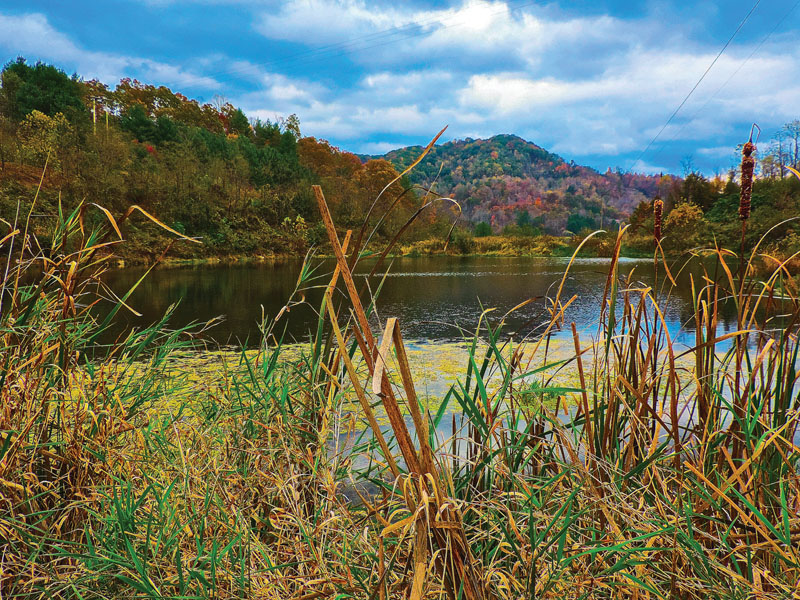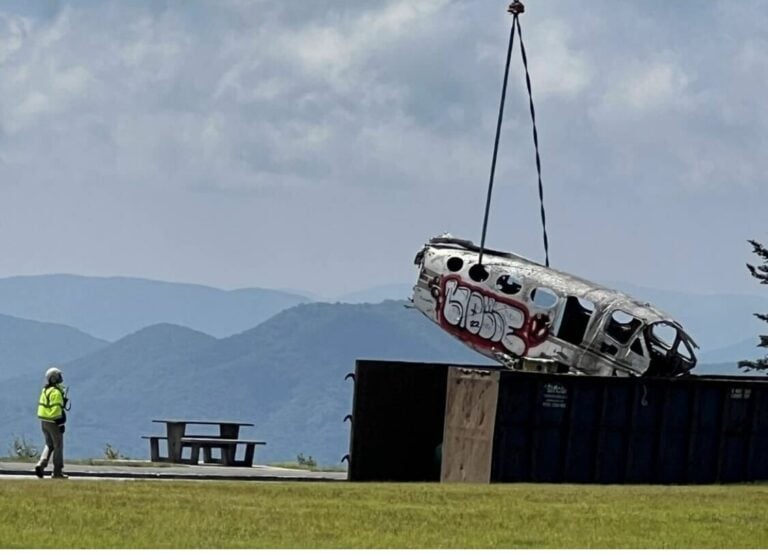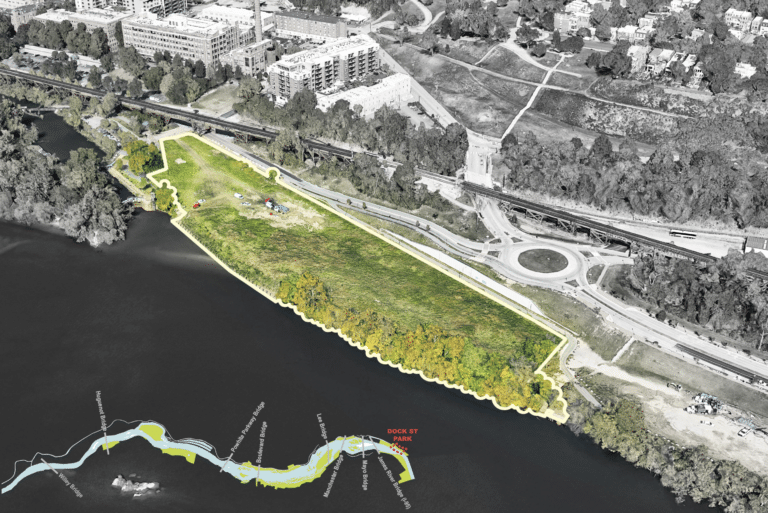Kyle Hill could look at any number of things at the former surface mine on Dale Ridge: the scrubby hillside, the retention ponds built to catch runoff, the crumbling highwall sending truck-sized boulders careening to the mine floor. Instead, when he visits this site in Virginia’s Wise County, Hill sees opportunity—and ducks.
“See down there?” Hill asks, aiming his binoculars at a clump of cattails framing a nearby wetland. “That place was just full of ducks last week.”
An avid outdoorsman, Hill is a native of Coeburn, a town built around the coal industry in this corner of southwest Virginia. As a student at the University of Virginia’s College at Wise, Hill has been taking a different look at the many former surface mines that dot the central Appalachian landscape, wondering how they can support populations of game species like waterfowl.
While using old mines as a catalyst for wildlife conservation might seem odd, Hill’s approach isn’t happening in a vacuum. A host of efforts is taking a renewed look at former minelands as a linchpin in diversifying Appalachia’s outdoor economy.
As many as 1,800 square miles of central Appalachia have been touched by surface mining, a practice where coal is reached by removing the rocks above it rather than using a shaft to reach it underground. This approach has far-reaching impacts, including leaching metal-laden runoff into waterways and eradicating headwater streams and forests. A 2016 study by researchers at Duke University even found that surface mining has altered Appalachian topography, dropping the average slope of mined areas in the mountains by forty percent.
While the environmental and social concerns of mining have been well-advertised, surface mines can become forgotten by the public eye once coal extraction has ceased. “The environmental community has done a really good job of communicating how destructive mining is—and for good reason, I think,” says Adam Wells, new economy program manager for Appalachian Voices. “However, it’s not that cut and dry.”
Wells stresses that the coal economy’s collapse has opened the door to novel discussions about economic alternatives, including those based around former mines. New funding opportunities have also become available for developing abandoned mineland (AML) features, closed before the passage of the Surface Mining Control and Reclamation Act of 1977. “That funding could really serve as a catalyst to get some innovative economic development projects going that right now are just good ideas,” Wells says.
In 2016, Appalachian Voices and partners released a report identifying 14 AML sites in southwest Virginia that could support projects from solar farms to community parks and trail systems. Their work marks a shift in our collective philosophy of how to deal with former mines, viewing them as less of a permanent liability and more as an opportunity for growth.
One of the sites identified in Appalachian Voices’ report is the Norton Riverwalk, a planned trail along the Guest River that will link downtown Norton, Va. to neighborhoods on the city’s eastern end. The project would rehabilitate a decommissioned coal loading site and connect it to a popular multiuse path running along a former mine highwall, which was transformed into a gateway for the city in 2014.
Norton’s City Manager, Fred Ramey, believes that the Riverwalk is “perfect” for creating dual environmental and community benefits. “It’s a win-win scenario that will remediate environmental concerns, transform portions of the area into outdoor classrooms, and provide more recreational opportunities,” Ramey says.
Nearby, the town of Haysi, Va., is creating a multiuse trail to connect its downtown to Breaks Interstate Park. A nearby coal waste site presents the opportunity for creating a park that would include a put-in for boaters on the Russell Fork.
The town of St. Paul, Va.—which hosts a 100-mile trail system built partially on a former surface mine that caters to both ATVs and non-motorized users—has become a model for revitalizing coal economies. Private investment poured into town following the trail system’s 2013 opening, with new businesses catering to visitors and a $7.3 million project renovating a downtown building into a boutique hotel that will open this year.
Redeveloping former mines is slow work, and each site comes with a unique set of complex—and expensive—environmental issues. “It’s not hard to look at a reclaimed mountaintop removal site and envision a field of solar panels,” Wells says, “but it’s a little trickier to think about smaller-scale ways to turn these liabilities into assets.” Regardless, a former mine can still hold surprises.
Earlier this year, I accompanied Kyle Hill to the mine on Dale Ridge. We arrived just in time to flush a pair of wood ducks that had arrived for the season in one of the mine’s settling ponds. Hill has inventoried almost 15 waterfowl species there this year, including several not previously recorded in this corner of the state.
It can be daunting to imagine the site being a haven for birdwatchers or outdoor enthusiasts, but as we stood in the middle of the mine, the ducks caught our eye. Instead of leaving, they flew in a long arc around the fringes of the mine and settled back in the pond once we’d moved on. For them, this was already home.








